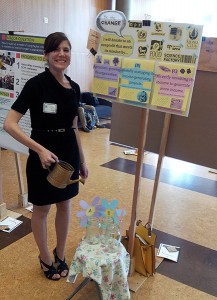Howdy!
This week has been abuzz with students interested in getting help with their data needs. The CAS-IT Data Services GTF (me) can help you find and analyze your data and also provide guidance on statistical software (like R, SPSS, and STATA).
But, although it might seem as such, I am no wizard. Therefore, if you do not want to spend too much time waiting in my office while I search Google for the answer to your question, I have some recommendations!
- Have some questions in mind. If you’re confused, think about why. Are you having trouble with the software? Can you not find the right sources? Is the statistical computation giving you trouble? It helps me help you if you know with what you need help. (That’s a mouthful!)
- Email me some background beforehand. I can be a better resource to you if I’ve done looking into the subject beforehand. For example, if you need help with R, it would be great if you could email me your problems a few days before so I can make sure to have answers for you when you come in. Believe it or not, a lot of what I do involves searching on Google over and over again until I find something that works. So, it might be a little boring if you have to sit and watch me do that during office hours. Sending it ahead of time gives me time to prepare.
- Make an appointment. Some days no one comes into my office. Some days there’s a line. If you set up and appointment during my office hours, then you can be seen without waiting.
These are also good rules for office hours in general. The GTF’s on campus want to help you! If you can make that mission easier for us, it also makes getting your questions answered easier, too.

 u might be doing some research. You might be thinking about what new technology you want to learn. You might just be curious about these blog posts!
u might be doing some research. You might be thinking about what new technology you want to learn. You might just be curious about these blog posts!
 Let’s say you are Indiana Jones (hey, why not?), and you are exploring an underground castle. As you walk through the deep tunnels, you find an amazing library! One of the texts in the library is a never before known Shakespearean play that Shakespeare himself wrote for the the king of that underground castle. Because you’re Indiana Jones, you believe that there are very important clues in this text. So, you take the book back to your laboratory and decide that you want to analyze the number of times certain words are printed so you can figure out your next step. Counting the words by hand, however, is not an option because the world might end in 48 hours if you do not solve the puzzle! Luckily, a beautiful scientist works in your lab and she has a scanner and some OCR software. First, she scans the play into a .pdf. Next, she uses OCR software to turn the file into a digitized, searchable document. Then, with her coding and programming knowledge, she converts the messy, digitized copy into a workable document. Finally, she analyzes the text! And boom… you’ve solved your puzzle!
Let’s say you are Indiana Jones (hey, why not?), and you are exploring an underground castle. As you walk through the deep tunnels, you find an amazing library! One of the texts in the library is a never before known Shakespearean play that Shakespeare himself wrote for the the king of that underground castle. Because you’re Indiana Jones, you believe that there are very important clues in this text. So, you take the book back to your laboratory and decide that you want to analyze the number of times certain words are printed so you can figure out your next step. Counting the words by hand, however, is not an option because the world might end in 48 hours if you do not solve the puzzle! Luckily, a beautiful scientist works in your lab and she has a scanner and some OCR software. First, she scans the play into a .pdf. Next, she uses OCR software to turn the file into a digitized, searchable document. Then, with her coding and programming knowledge, she converts the messy, digitized copy into a workable document. Finally, she analyzes the text! And boom… you’ve solved your puzzle!